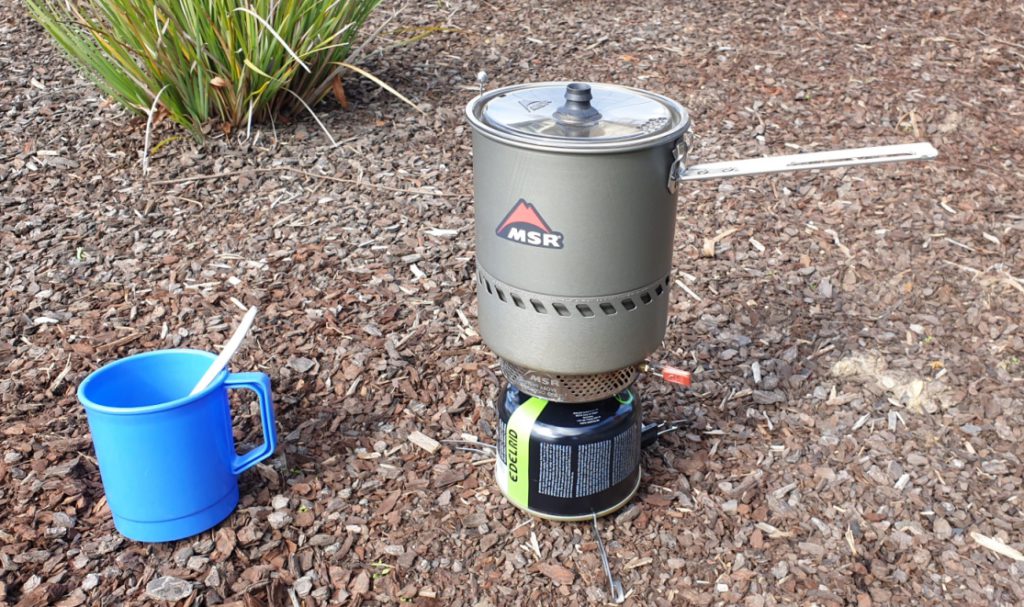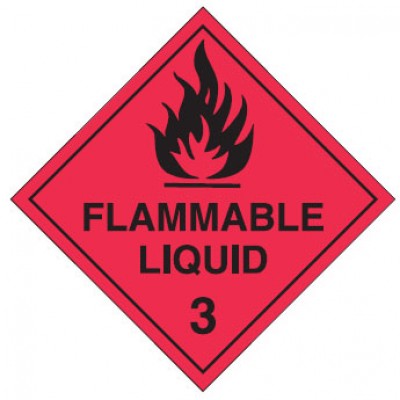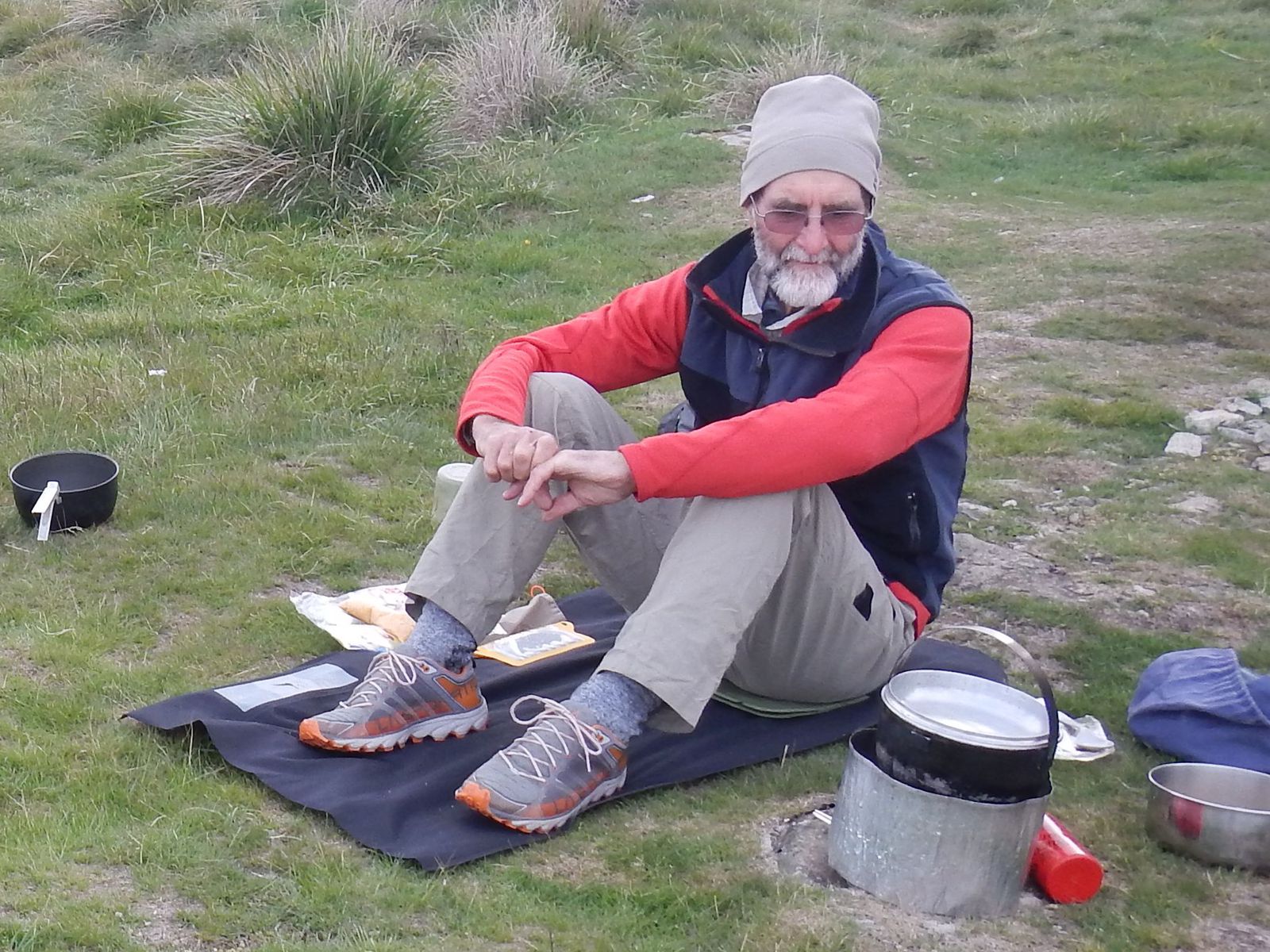Reading Time: 4 minutes
There are numerous lightweight stove options that make cooking while bushwalking easy and convenient.
Most bushwalking stoves are designed for cooking meals for one or two people. Ideally, there should be one stove for each tent group.
Choosing a stove
Carefully consider the type of stove before purchasing. A good quality stove will last a long time with correct use and proper care.
Considerations when choosing a stove include:
- Ease of operation – lighting and flame control, use by novices.
- Safety when using the stove. See Stove safety.
- Fuel type and fuel efficiency
- Stove weight including fuel, pots, billies, windshields, etc .
- Fuel availability
- Temperatures in which the stove will be used.
- Cooking style; multi-course gourmet or simple water boil only use.
Types of stoves
Stoves can be classified by the type of fuel they use, and by whether the fuel is burned under pressure or not:
- Gas canister
- Non-pressurised liquid fuel stoves
- Pressurised liquid fuel stoves
- Solid fuel
- Wood
Gas stoves
Stoves attach to a canister in two ways:
- By screwing on to the top of the canister.
- Connecting with a short fuel line. This allows the burner to be shielded from the wind to increase efficiency.
Stoves with a fuel line are the most stable. Stability for other types can be improved by using stabilisers that attach to the bottom of the canister.
Integrated gas stoves: some models of gas stove have an integrated burner, cooking pot and wind guard system to improve fuel efficiency.
Advantages:
- Very quick to assemble.
- Easy to light and good flame control.
- High heat output so quick to boil water.
- Fuel burns cleanly and don’t tend to clog up
- Gas canisters come in various sizes so can be purchased to suit trip length.
- Little chance of fuel leakage if correctly attached.
Disadvantages:
- Running costs are more expensive than using liquid fuels.
- Harder to determine the amount of fuel remaining in the canister.
- Canisters are not designed to be refilled and must be disposed of when empty.
- Less efficient in very cold conditions compared to liquid fuel stoves.
- Upright models are unstable when a large billy is used.
- Integrated gas stoves do not simmer well.
- Integrated gas stoves are more expensive than simpler models.
TIP: When buying canisters check that the gas mix is suitable for the temperature the stove will be used in.

Non-pressurised liquid fuel stoves
Stoves using methylated spirits/denatured-alcohol are easy to operate and good for novices. Most popular models come with cooking pots and wind guards.
Advantages:
- Stove construction is simple and robust.
- No pumping or priming required.
- Simmer ring adds some heat control.
- Very quiet operation.
- Fuel burns cleanly.
- Fuel is commonly available and cheaper than alternative fuels.
- Fuel bottles are refillable.
Disadvantages:
- Heat output is low so boiling/cooking times are much longer compared to other stove types.
- Poor heat output adjustment.
- Refuelling during cooking causes delays.
- Much less efficient than pressurised liquid fuel stoves so more fuel must be carried.
- Hard to see the flame in daylight so care is required when adjusting the simmer ring.
- Fuel can leak if the fuel bottle is not closed properly.
Pressurised liquid fuel stoves
These stoves require some care to operate efficiently.
They use forms of petrol including Shellite (white gas), kerosene and unleaded petrol. Shellite is the best fuel as it burns cleanly without creating soot residue that can clog the stove.
A pump is used to pressurise the fuel bottle or tank. Some models require ‘priming’ to light them – by using some fuel (or methylated spirits) to pre-heating the fuel so that it is vaporised.
Advantages:
- Very high heat output.
- Fuel efficient – good on longer trips.
- Fuel bottles are refillable.
- Performs very well in very cold conditions and at altitude as pressure can be maintained.
- Some repairs can be done in the field if spare parts are carried.
Disadvantages:
- Slower and more tedious to light than other stove types due to the need for priming.
- Fuel is required for priming.
- Expensive.
- Potential fire risk due to flammability of fuel and flare ups while priming.
- Fuel leakage if the fuel bottle is not closed securely.
- If run on kerosene or unleaded petrol, the entire stove will require cleaning every couple of days.
Liquid fuel stoves can be very dangerous if not properly used – see Stove safety for more information.

Solid fuel stoves
- Cheap to buy and lightweight.
- Solid fuel tablets are burnt so no fuel spills or leakage.
- Heat output is very low so boiling time is much longer.
- Too slow to use effectively for cooking meals.
- Impractical for most bushwalkers.
Wood stoves
- Lightweight.
- Use twigs and small sticks as the fuel source so not good in wet conditions.
- Banned from use in fuel stove only areas.
- Not commonly used by bushwalkers.
Spare parts
Some pressurised liquid fuel stoves can be repaired in the field if a repair kit is carried. A stove repair kit is recommended for extended trips.
Caution: fuel containers
- Only use fuel bottles designed for the purpose. Do not use any other bottle types to carry fuel.
- Label fuel bottles clearly with the type of fuel. Confusing fuel types can cause fire and burn injuries. Putting Shellite in a methylated spirit stove could be catastrophic.
- An adhesive ‘flammable liquid’ label can also be added.


